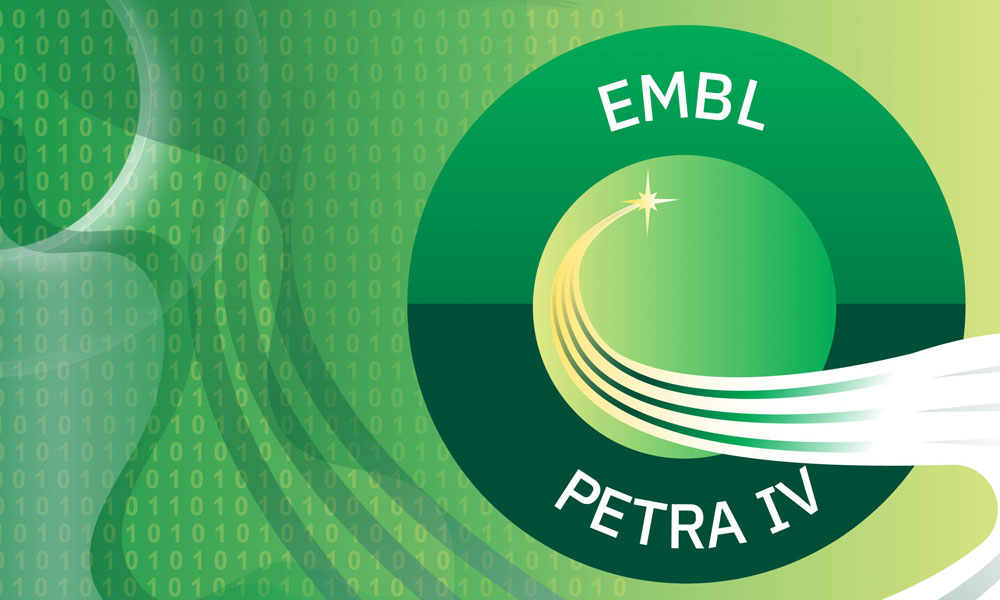
Read the latest Issue
A workshop run by EMBL Hamburg explored opportunities for structural biology at the future, upgraded PETRA IV synchrotron

EMBL Hamburg’s beamlines for structural biology are located at PETRA III, the synchrotron storage ring operated by the Deutsche Elektronen-Synchrotron (DESY). PETRA III is a storage-ring-based X-ray radiation source that produces some of the brightest X-rays in the world. Every year, hundreds of researchers from around the world come to PETRA III to use its high-intensity X-ray beams for their research.
The current plan is for PETRA III to be transformed into PETRA IV in 2025 and 2026. During this process, the magnets controlling the position of the charged particles inside the synchrotron will be upgraded. This will give PETRA IV unprecedented spectral brightness. PETRA IV will offer a new portfolio of about 30 beamlines. To plan future services that will offer the greatest benefit to the life science community, EMBL Hamburg organised a virtual workshop, ‘Strategy for future EMBL research infrastructures in the Life Sciences in Hamburg’, to open space for public consultation. The event, organised in close coordination with DESY, took place from 29–30 March 2021 and had nearly 300 participants.
The workshop included talks by EMBL staff, key partners at DESY and European XFEL, and users from EMBL member states, who presented their national perspectives. The participants discussed ideas for developments that would best meet the needs of the scientific community.
In her opening talk, EMBL Director General Edith Heard presented the bold vision of the new EMBL Programme, Molecules to Ecosystems 2022–2026. Its central goal is to study life across scales: from atoms and molecules through tissues to organisms – in the context of ecosystems. Edith stressed that EMBL Hamburg’s expertise in structural and infection biology is an integral part of the new Programme.
This aligns with DESY’s vision of 3D X-ray microscopy for matter of all kinds including tissues and organisms across scales, as presented by Helmut Dosch, Chair of the DESY Board of Directors, and Christian Schroer, Leading Scientist of PETRA III. “You could think of PETRA IV as an X-ray microscope for chemical, biological, and physical processes. PETRA IV will provide multiscale images of the structure and dynamics of living organisms,” said Christian Schroer.
Savvas Savvides, a group leader at the VIB–UGent Center for Inflammation Research and an EMBL Council member for Belgium, stressed that structural biology should build bridges to clinical research. He presented examples in which EMBL Hamburg’s facilities for macromolecular crystallography and SAXS enabled scientists to study protein crystals obtained from post-operative samples from patients and to support the development of novel therapeutics. He also proposed that a combination of X-ray imaging and SAXS will aid in studying the role of protein crystals in physiology and disease.
Poul Nissen, Director of DANDRITE and a member of EMBL’s Scientific Advisory Committee, discussed the need for closer links between structural biology and cell biology. He stated that the future of the field is in time-resolved experiments, which produce molecular motion pictures rather than snapshots. This is critical for studying not only how molecules look, but also how they behave. “EMBL Hamburg has really shown the way with technological approaches to serial synchrotron crystallography and time-resolved structural biology at their P14 beamline,” Poul said.
Kristina Djinović-Carugo, Department Chair of the University of Vienna and Chair of EMBL-Hamburg Project Evaluation Committee, presented the analysis of macromolecular structure and flexibility with crystallography and SAXS and underlined the importance of ‘unstructural biology’ to comprehensively characterize macromolecular systems.
A new technique that will play an important role in EMBL Hamburg’s future portfolio is X-ray imaging. In this approach, hard X-rays are used to study tissues or even entire organisms, rather than individual molecules. Alexandra Pacureanu, a group leader at the European Synchrotron Radiation Facility, discussed the new possibilities opened up by this technique. “We can address fundamental questions in neuroscience, for example how walking is controlled in the brain in Drosophila,” she said. X-ray imaging can also be combined with other techniques, such as X-ray fluorescence. Among other things, this allows scientists to study both the detailed structure of a sample and its chemical composition at the same time.
X-ray imaging will be an important part of future research and services at EMBL Hamburg. Liz Duke, the new team leader joining EMBL Hamburg in May, plans to establish biological X-ray imaging and high-throughput tomography. “X-ray imaging is more than just taking pretty pictures. We actually want to use it to solve and understand biological questions. For me, the key factor is to investigate biology in context. I truly believe one day we will be able to image from organism to atoms,” she said.
Another topic covered by the workshop was integrative structural biology, which combines data from different experimental approaches to study molecular structure. EMBL Hamburg will further develop as a ‘one-stop shop’ providing services from sample preparation through to data collection at its beamlines, as well as data analysis and depositing FAIR data, in close collaboration with EMBL’s European Bioinformatics Institute (EMBL-EBI). Expanded services should also include more training opportunities for users. Through cooperation with EMBL’s technology transfer arm, EMBLEM, EMBL Hamburg will also build on its successes with creating spin-off companies, such as BIOSAXS, and will expand its collaboration with industry.
“PETRA IV will offer a unique opportunity to start an entirely new era of services in structural biology,” says Matthias Wilmanns, Head of EMBL Hamburg. “The workshop was a great success and enabled us to better understand the needs of the scientific community. This will help us define our future services at PETRA IV, and expand other activities, such as training.”
Looking for past print editions of EMBLetc.? Browse our archive, going back 20 years.
EMBLetc. archive